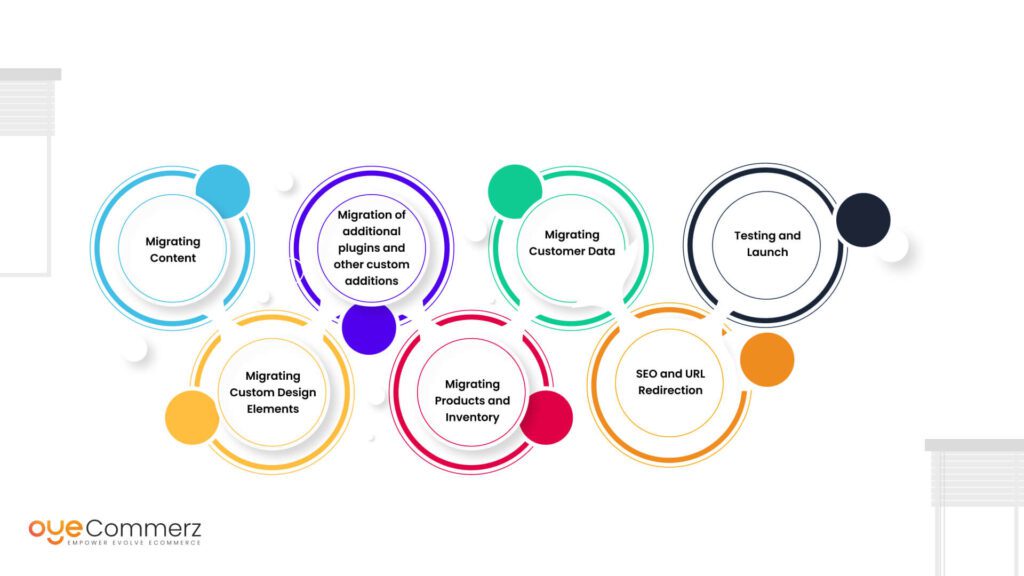In the ever-evolving sphere of online retail, choosing the right solution is essential for your company’s prosperity. If you’re currently using WP and considering a migration to Shopify, you’re not by yourself. Countless businesses are making this transition to leverage Shopify’s comprehensive tools, user-friendliness, and scalability. This guide will take you through the journey of migrating from WP to this platform effortlessly, ensuring that you unlock your online retail potential.
Why Switch from WP to Shopify?
Before exploring the migration journey, it’s important to know why this transition can be helpful for your eCommerce business:
Intuitive Design: Shopify offers an intuitive system that streamlines store operations, making it easier for non-technical users.
Scalability: As your brand expands, Shopify can accommodate increased visitors and sales without compromising speed.
Integrated Features: Shopify provides integrated tools for SEO, analytics, payment management, and much more, reducing the requirement for several plugins.
Enhanced Security: With Shopify, you utilize strong security measures that safeguard sensitive customer data.
Steps for a Smooth Migration
Migrating your online store from WP to Shopify requires several actions.
Here’s how to facilitate a successful transition:
Prepare Your Migration Plan
Start by drafting your migration plan. Pinpoint which elements of your existing site you want to migrate, such as:
Product data
Client data
Order history
Articles
Choose the Appropriate Migration Package
Based on your needs, opt for a migration service that fits your eCommerce goals. OyeCommerz delivers various choices:
Basic Migration Package: Perfect for boutique stores with fewer products.
Regular Option: Suitable for mid-range businesses with moderate needs.
Comprehensive Solution: Best for big stores demanding extensive customization.
Secure Your Data
Prior to beginning the migration, ensure that you Shopify image optimization have a full archive of your WordPress site. This action is critical in case anything goes awry during the move.
Extract Your Data from WordPress
Utilize plugins or custom scripts to transfer key data from your WordPress site:
Inventory
Users
Sales records
Blog posts
Upload Information into Shopify
Once you have your data retrieved, utilize Shopify’s import tools or third-party apps to migrate your content into your Shopify store. Confirm that all content is properly structured and placed.
Customize Your Shopify Store
Following migrating information, adjust your Shopify store’s theme to match with your style. Look into working with a developer if you need complex customization.
Configure Checkout Systems and Delivery Settings
Arrange billing solutions and delivery choices in Shopify to ensure a seamless checkout experience for customers.
Adopt SEO Standards
To preserve your SEO performance during the Shopify migration timeline migration:
Implement 301 URL mappings from previous URLs to updated ones.
Refresh metadata.
Adjust visual content and copy for better ranking.
Evaluate Your Migrated Platform
Ahead of publishing, extensively review your migrated platform. Look out for any errors, transaction errors, or untransferred content.
Publish Your Site
When everything is in order, it’s time to launch! Announce the update to your users and invite them to experience the updated capabilities of your Shopify store.
Post-Migration Assistance
Even after launching your Shopify store, regular help is important. Consider engaging professionals who can assist with:
Technical support
Customer engagement
Performance optimization
Conclusion
Migrating from WP to this platform can be a game-changing step for your eCommerce. By using this guide and utilizing tools like those offered by industry leaders, you can guarantee a effortless transition that improves your business potential. Adapt to the opportunity and discover the potential of Shopify today!
